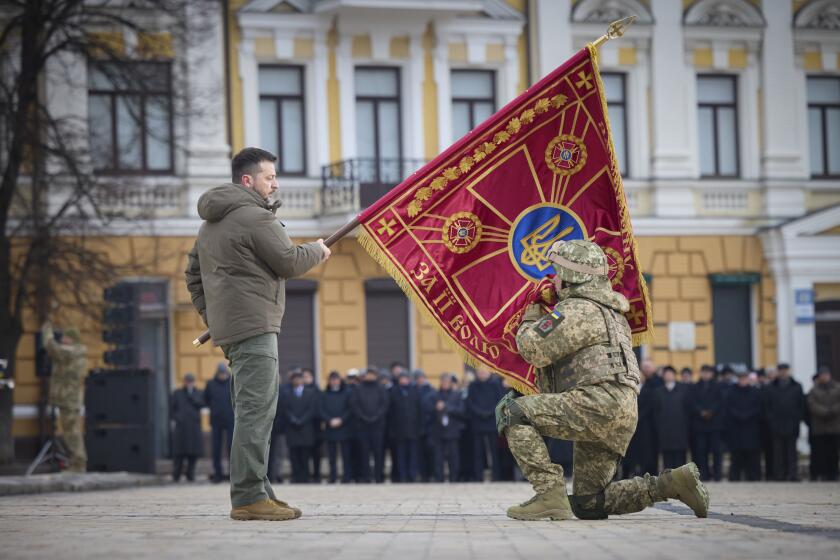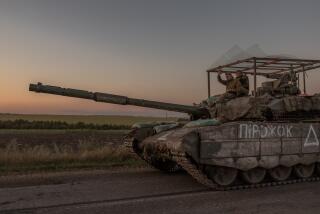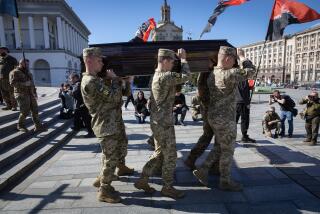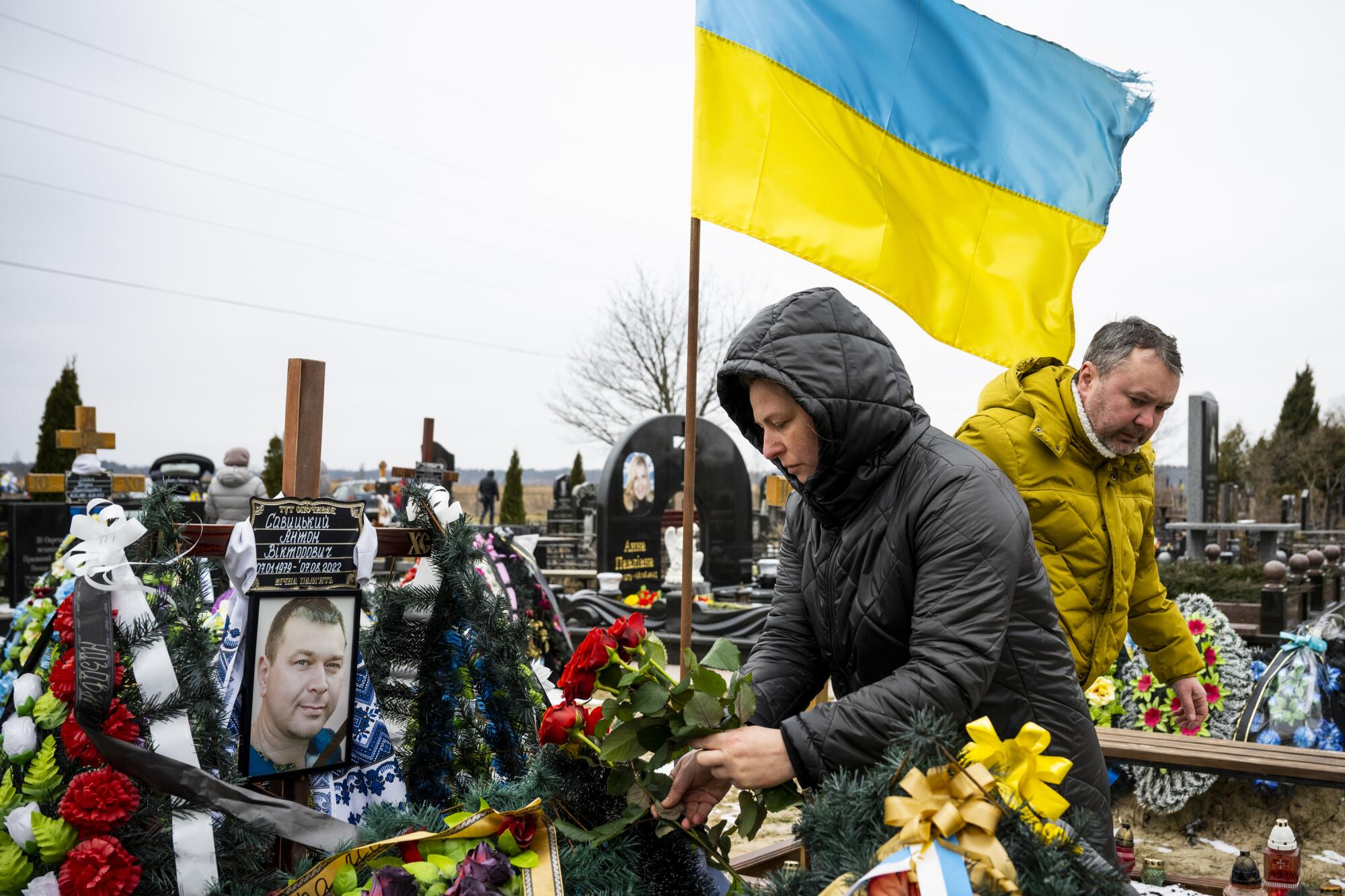
KYIV, Ukraine — Russia’s war on Ukraine has entered its second year, with a universal realization that the world is witnessing a long, protracted conflict, the deadliest in Europe since World War II, in which Moscow and Kyiv are hoping against long odds for a decisive breakthrough in 2023.
“This has become a grinding war of attrition,” NATO Secretary General Jens Stoltenberg said at a recent meeting of member countries’ defense ministers.
And wars of attrition tend to end badly, with overwhelmingly deadly tolls.
A year on, tens of thousands of Ukrainians and Russian soldiers are dead. The United Nations has counted nearly 10,000 Ukrainian civilian fatalities, acknowledging that the toll is higher but cannot be tallied amid the chaos.
Across the country, Ukrainians looked back on a year of war with both sorrow and pride as their president vowed to push for victory over Russia.
Millions of Ukrainians are displaced from their homes; thousands of children have been reportedly kidnapped and spirited to Russian territory; scores of villages and cities lie in full or partial ruin; and global impacts include soaring prices for oil and food products that normally come from the region.
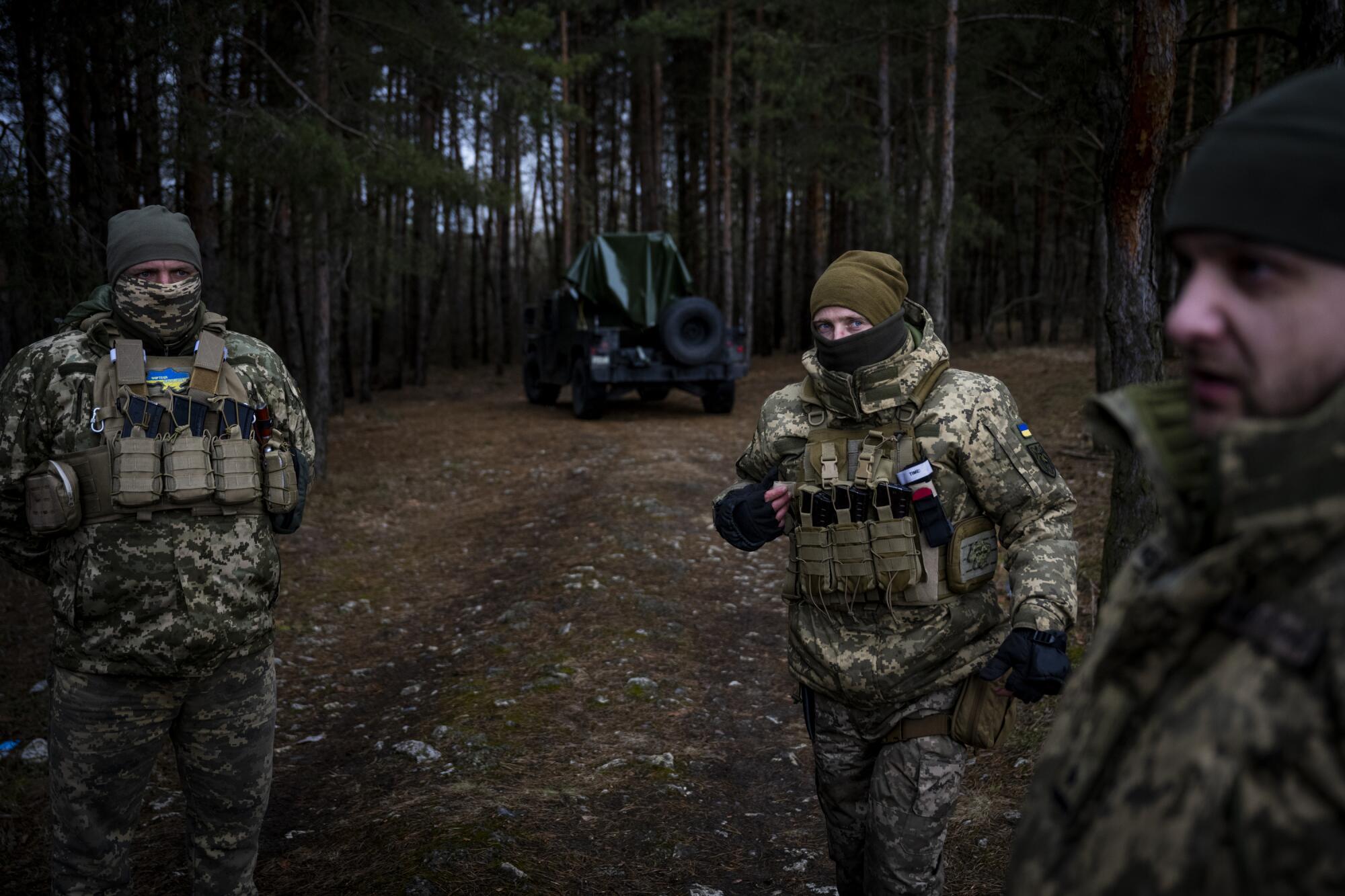
Prospects for a diplomatic resolution remain low while more fighting is on the horizon. Both sides are gearing for a spring offensive, with Russians desperate for a major victory on the battlefield after numerous setbacks and Ukrainians determined to take back more captured territory, predominantly in the south and east.
Most military analysts predict that Russian President Vladimir Putin will not attempt again to conquer Kyiv, the capital, after failing spectacularly early in the war to gain what was presumed by analysts to be an easy trophy. But Putin, they say, is nowhere near quitting.
The U.S. government has thrown its lot behind Ukraine and its president, Volodymyr Zelensky, a former comedic actor and an improbable statesman hero, in ways not seen in other recent conflicts. It puts Washington at odds with fellow nuclear power Moscow, at least rhetorically, on a daily basis. The U.S. also galvanized a rare show of broad Western unity in support of Ukraine.
The run-up to Friday’s one-year anniversary of the Russian invasion — for Ukrainians, a moment of somber reflection and steely resolve — highlighted that commitment. On Saturday, air-raid sirens again blared in Kyiv, symbolizing the plunge into another year of warfare.
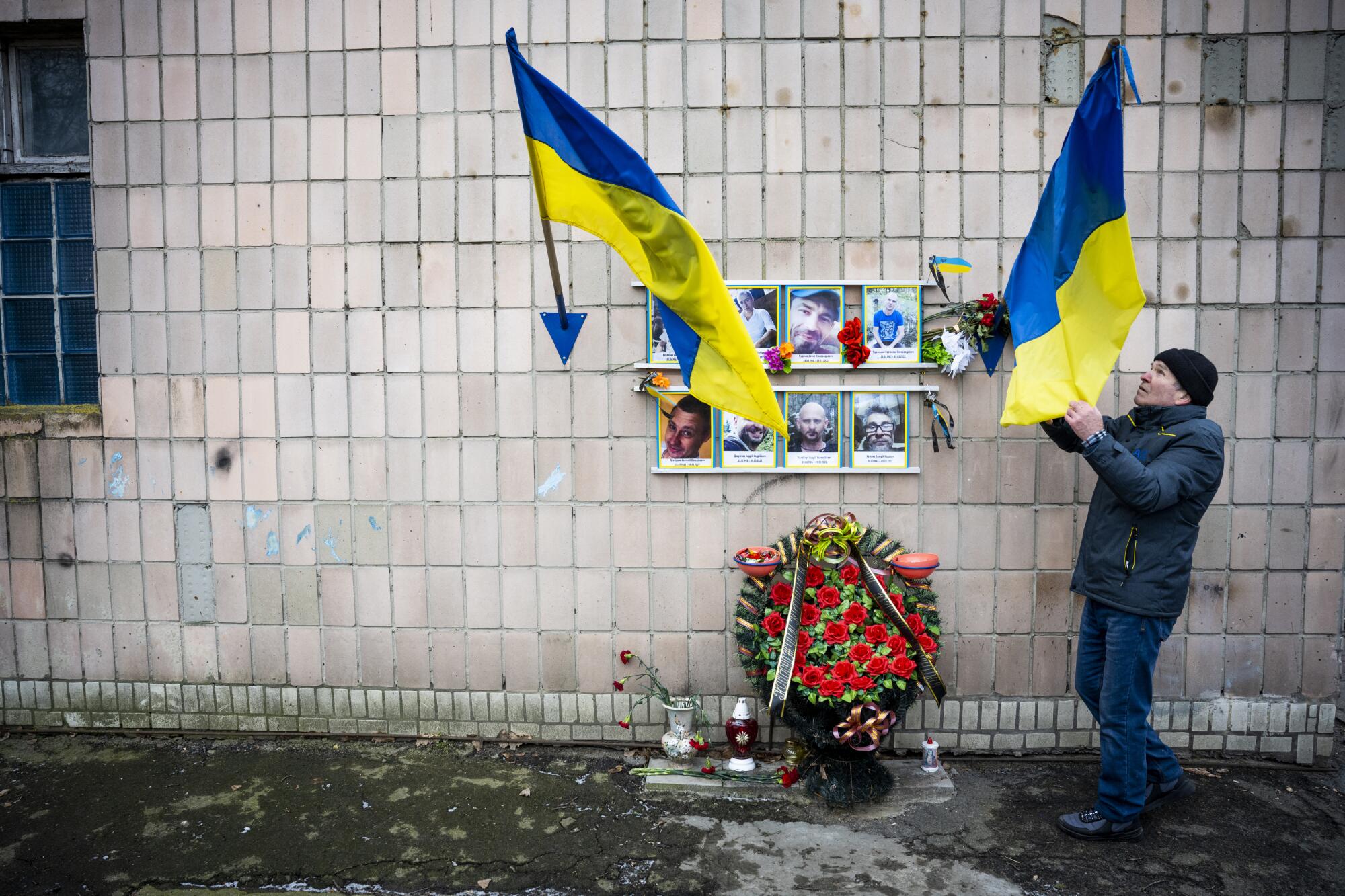
The Ukrainian capital last week was the backdrop for a dramatic, secrecy-shrouded trip by President Biden, who strolled a cobbled square with Zelensky and reaffirmed Washington’s pledge of continued support. It was the first time in modern history that a U.S. president had ventured into a war zone not controlled by the U.S. military, and a huge affront to Putin, who had assumed he would be controlling these streets long ago.
“Kyiv stands. And Ukraine stands,” Biden said.
He announced another half-billion dollars in military aid, in addition to the more than $50 billion provided for weapons and economic assistance. This supply has evolved from relatively unsophisticated howitzers and Javelin missiles in the early days to heavier and longer-range firepower including a Patriot battery and battle tanks. Zelensky is always seeking more, but Washington has been carefully calibrating a slow upgrade of materiel mindful of what the Ukrainians can operate effectively and what Moscow will view as provocative escalation.
Entire battalions of Ukrainian troops are being taken outside the country and trained to operate the more complex military equipment, U.S. officials say.
Biden’s next-day appearance in Warsaw, where he drilled down on the same message, coincided with a fiery speech by Putin on Defender of the Fatherland Day, in which he made it clear that a full victory remains Russia’s goal.
The uncompromising rhetoric and the erratic pace on the battlefield suggest that no resolution is in sight.
“I hope that we’re not sitting here a year from now discussing the same things,” said Dara Massicot, a senior policy researcher at Rand Corp. “The Ukrainians are going to need predictable and sustainable support. ... We are shifting into a really attritional, ugly, crude style — yet effective style — of fighting.”
The battlefield
Though Russia and Ukraine envision a spring offensive, the fighting has never stopped during the chilly winter. Fierce battles have been raging around the smoking ruins of the Ukrainian-held eastern town of Bakhmut for months. Although it would not represent a particularly important gain for Moscow’s forces, Russia believes it would open a tactical path to larger cities such as Kramatorsk and Sloviansk in eastern Donetsk province.
Russia’s battlefield strategy is largely concentrated on the Donbas region, the eastern industrial heartland where pro-Russian separatists have been largely in control for years. Moscow wants to expand its holdings there.
Analysts say the fighting indicates that Russia’s offensive is already in progress — “under way and underwhelming” as one put it — as Russians move equipment and fortify positions ahead of a broader offensive and gird against Ukrainian forces.
The Ukrainians’ preferred battle plan in coming weeks is thought to be a run south to bisect the V-shaped territory Russia controls in southeastern Ukraine. That would cut the land bridge that facilitates Russian supply lines and potentially make it more difficult for the Kremlin’s forces to maintain connections to Crimea, the peninsula on Ukraine’s southern Black Sea coast that Russia occupied and illegally annexed in 2014.
For both sides, the ability to wage war greatly depends on the availability of weapons.
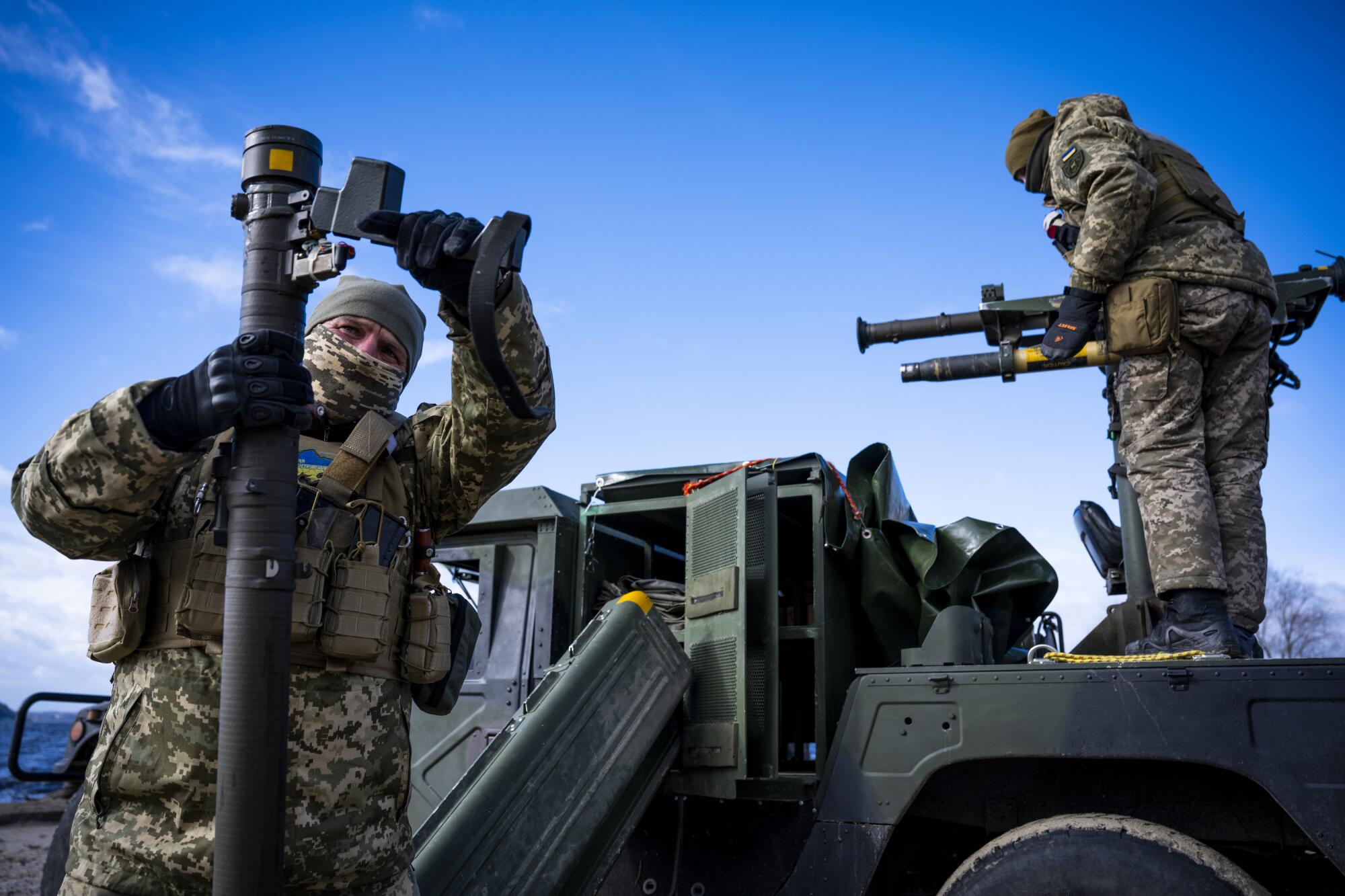
As Ukraine has benefited crucially from the stream of armaments from the U.S. and Europe, Russia faces critical shortages of weapons. Munition factories are reportedly working triple shifts to meet demands, while the military’s order of battle tanks outstripped production capacity tenfold. There is also a crunch in production of drones and artillery, analysts said, which is expended at high rates in the battlefield.
“The Russian defense industry is really struggling,” said Shashank Joshi, a visiting fellow in war studies at the King’s College London and defense editor for the Economist magazine.
Consequently, Russia is turning to outside sources. Iran has supplied Moscow with drones, according to U.S. officials who also say China is considering sending “lethal aid” to Russia. U.S. Secretary of State Antony J. Blinken warned his Chinese counterpart in a recent meeting that such an action would be a serious mistake and would invite U.S. sanctions.
As for manpower, Russia has plenty, thanks to mobilizations of conscripts who form a legion of poorly trained soldiers who often don’t survive long in combat. More are available, although enormous numbers of fighting-age Russian men have fled the country to avoid deployment to a front line where brutal conditions sometimes evoke wars of centuries past.
“It is a complete meat grinder for Russian forces,” Victoria Nuland, U.S. deputy secretary of State for political affairs, told CNN on Thursday. One U.S. estimate reports that 200,000 Russians have been killed or wounded. Like Russia, Ukraine does not disclose its military casualty counts.
Russia’s offensive has been bolstered by a mercenary force known as the Wagner Group, lorded over by Russian oligarch and Putin ally Yevgeny Prigozhin, who has been blacklisted by the U.S. government along with dozens of other Kremlin officials, Russian businessmen and companies.
The Wagner Group has a ruthless reputation and has taken its deadly tactics around the world, especially in Africa, where it has shored up dictatorships by snuffing out dissidents.
A rare public spat between the Wagner Group and the Russian military broke out recently, with Prigozhin complaining that many of his men were killed in Ukraine because of “shell hunger” — a failure of the Russian army to supply critical ammunition. He posted photos of dozens of dead mercenaries.
The dispute was resolved by the weekend, when Prigozhin said ammunition supplies were finally flowing; however, it raised questions about whether the private fighting force — effective in its brutal way — would continue in the Ukraine battle. It also highlighted tensions at the top surrounding Putin and his senior commanders, which U.S. officials are eager to exploit.
“We are nowhere near the end of this war,” Rajan Menon, a political scientist at City University of New York who specializes in Russia, said at a panel for the Defense Priorities group that analyzes warfare. “Both sides … think that time is on their side, and they will prevail. So they’re better off fighting than not fighting.”
Marking the war’s first anniversary on Friday, Zelensky sought to rally his bloodied compatriots, declaring the country unbowed.
“We will do everything to gain victory this year,” he said.
Nuclear threat
Putin, in ways subtle and less so, has raised the specter of using nuclear weapons in the conflict, risking a broader and even deadlier conflagration. The threat was heightened by his speech last week, in which he announced he was “suspending” Russia’s participation in the New START treaty, the last nuclear arms-control pact between Washington and Moscow, possessors of the world’s two largest nuclear stockpiles.
While most analysts don’t think this means an imminent use of nuclear power, the hints are part of a leitmotif Putin has employed since the beginning of the war.
When he floated the suggestion in spring as Ukraine mounted a formidable counteroffensive, U.S. officials made direct contact with Russian officials and enlisted more neutral countries like India to do the same, all to persuade Putin to stand down, Blinken said.
The last thing Putin wants, Blinken said, is a wider war that brings in NATO, one he could not win.
Most analysts think that although the risk is higher now than in recent times, it remains unlikely that Putin will unleash nuclear weapons unless he sees his troops being routed or that he’s losing Crimea.
The Russians are “still concerned about escalation,” said Joshi, the London-based defense expert.
“If President Putin believes time is on his side … as [assessments indicate] he does, despite all the setbacks, it again militates against major escalation,” he added. “Why would you escalate if time is on your side?”
Chances for a breakthrough this year
Although each side will likely make significant gains this year — assuming their supplies hold up — it is not at all certain those gains will be decisive, as much as the two parties want them to be.
If Ukraine cannot recapture more territory and prove itself against the much larger Russian army, pressure will mount on Kyiv to negotiate. That is what Putin wants.
The Russians “think that they can just wait us out,” said Emily Harding, a former CIA analyst now at the Center for Strategic and International Studies, a Washington think tank. “They think they can drive wedges into the West and that eventually we’ll sort of lose patience with this kind of conflict and say, ‘Well, wouldn’t it be better if we went to peace negotiations,’ and peace negotiations in [Putin’s] mind means that he gets to keep what he has now.”
For Zelensky, that outcome is untenable.
Diplomacy and Western unity
Many around the world were surprised at the level of Western cohesiveness in support of Ukraine. Putin had hoped to divide and weaken NATO, but the transatlantic alliance is stronger than it has been in a long time. Two countries — Sweden and Finland — have abandoned decades of neutrality to petition to join NATO.
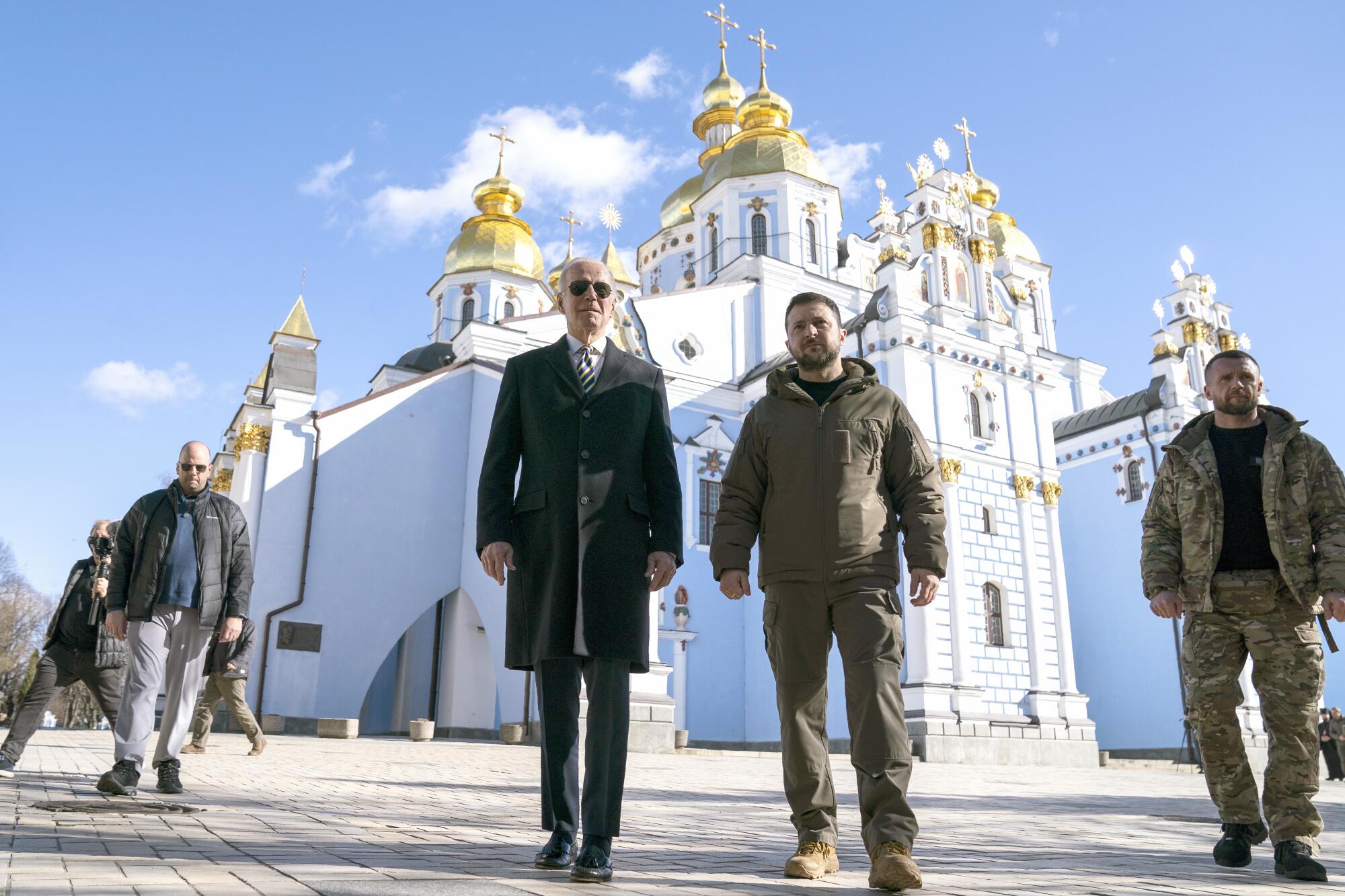
“We were not certain the center would come together and that it would hold,” Blinken, the American secretary of State, said in a video chat with the Atlantic magazine. “And it has.”
Can it last?
A noteworthy number of countries, including much of the so-called Global South, has refused to take a side or join in U.S.-European sanctions on Russia. There are many reasons: Some countries rely on Russia for fuel, food or other imported supplies; some see the conflict as a white man’s war in which they have no stake.
This comes despite several lopsided votes in the United Nations General Assembly, the most recent on Thursday, calling for Russia to withdraw from Ukraine or expressing similar pro-Ukraine sentiment. The resolutions are nonbinding, and the votes include a contingent of abstentions representing on average about 20% of U.N. membership. Some countries feel as if they can support these resolutions but not act against Russia.
They are not likely to budge. The pressing question is whether NATO unity will continue as governments deal with higher fuel prices and other fallout from the war. Even within NATO, it is the prosperous northern countries that have been the most active. They include nations that formerly belonged to the Soviet sphere of influence and feel threatened by an aggressive Russia.
“I don’t see any prospect for negotiation, and it looks increasingly like this will be a protracted conflict,” Andrea Kendall-Taylor, a former intelligence official now at the Center for a New American Security, told The Times. “Putin remains convinced he can prevail. Even as his military struggles to make gains on the battlefield, he is confident that the West will eventually grow tired of supporting Ukraine and that political changes in U.S. and European capitals will be advantageous for Moscow. ... So it’s a real impasse.”
Putin, she added, is following the playbook of many authoritarian leaders, with no incentive to stop the war.
What does peace look like?
The United States insists it wants to see a “just and durable” peace in Ukraine. But what that means remains unclear.
Ukraine has put forward a 10-point peace plan that includes an end to hostilities, Russia’s withdrawal from all Ukrainian territory and the creation of some type of war-crimes tribunal.
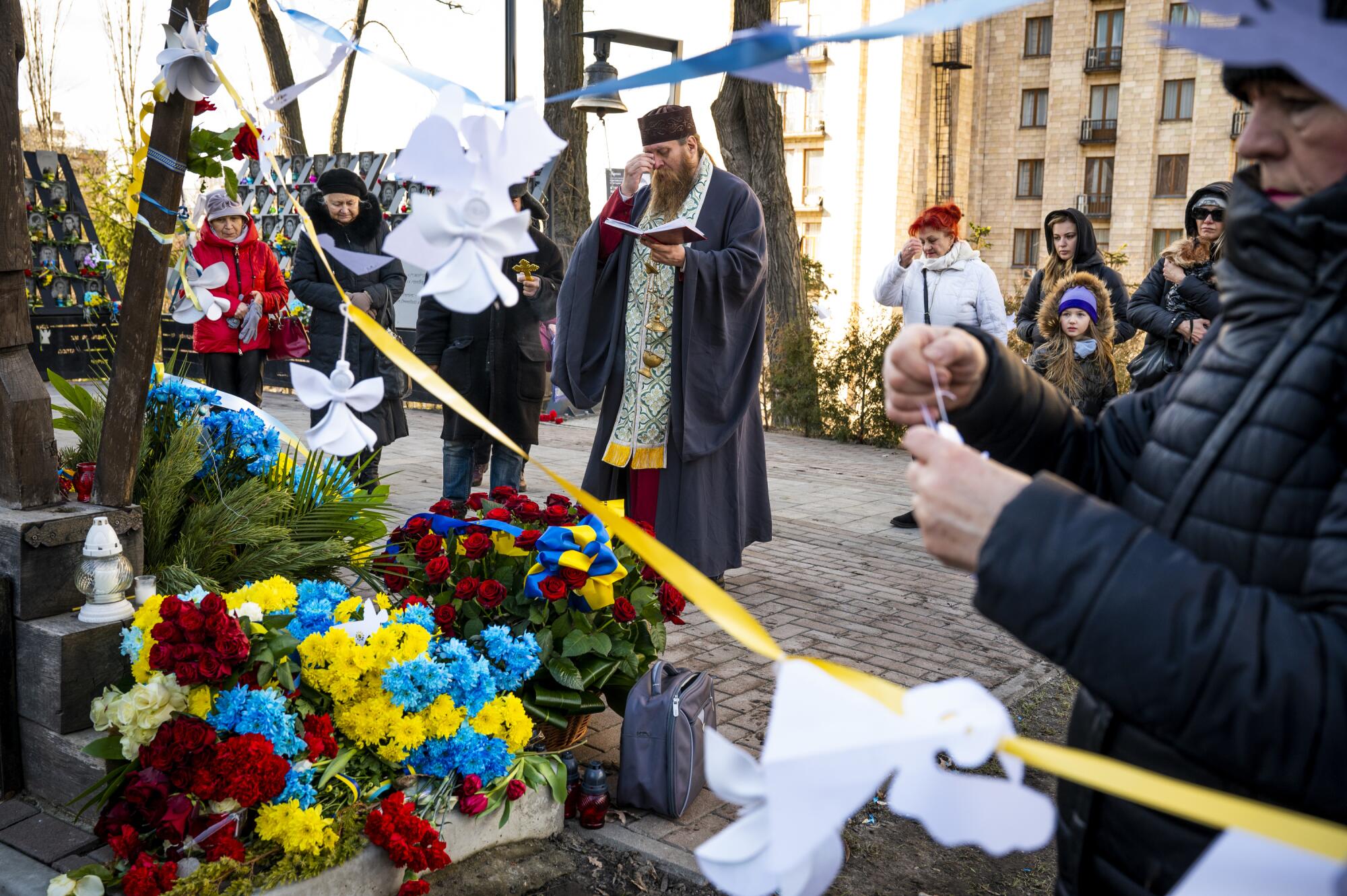
Those last two points are nonstarters for Russia. U.S. and European officials and analysts say Putin has shown no inclination to make peace.
John Sullivan, until late last year the U.S. ambassador to Russia, says that anyone who “wondered whether there was an opportunity to negotiate with Russia” should just look at Putin’s speech last week.
“He is all in; he says this is his messianic mission,” Sullivan said in remarks at the Wilson Center think tank in Washington. “In his mind ... this is total war against the West. There is no negotiation, there is no compromise, the only thing is victory.”
U.S. officials remain adamant they can’t let that happen.
“If we just walk away from this,” said John Kirby, spokesman for the National Security Council, “where does it stop?”
King reported from Kyiv, Wilkinson from Washington.
More to Read
Get the L.A. Times Politics newsletter
Deeply reported insights into legislation, politics and policy from Sacramento, Washington and beyond. In your inbox three times per week.
You may occasionally receive promotional content from the Los Angeles Times.
